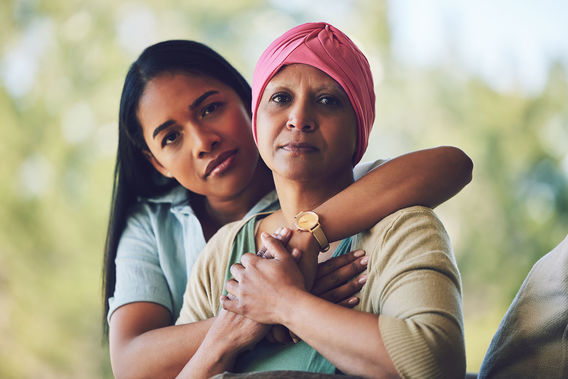
As we observe Hispanic Heritage Month from September 15 to October 15, 2024, it's essential to reflect not only on the rich cultural contributions of Hispanic and Latino communities in the United States, but also on the health challenges they face, particularly in the realm of cancer.
According to 2020 estimates by the United States Census Bureau, approximately 62 million Americans, or 19% of the U.S. population in the continental U.S. and Hawaii, identified as Hispanic or Latino. This number increases to 65 million when including Hispanic and Latino Americans in Puerto Rico, making this demographic the second-largest racial or ethnic group in the United States.
By the Numbers: Cancer Disparities Among Hispanic Communities
Despite the large population size, Hispanic and Latino communities in the U.S. face significant health disparities, particularly regarding cancer. Although Hispanic individuals have a higher life expectancy compared to non-Hispanic White (NH White) individuals—a health phenomenon known as the "Hispanic paradox"—they experience a disproportionately higher burden of certain cancers.
Cancer statistics reveal stark disparities in incidence, stage at diagnosis, and mortality rates among Hispanic and Latino populations compared to their NH White counterparts. For instance, Hispanic people are 85% more likely to be diagnosed with stomach cancer and more than twice as likely to die from it compared to NH White people. Similarly, they are twice as likely to be diagnosed with liver cancer and 56% more likely to die from it.
Cervical cancer poses a significant threat to Hispanic women, who are 43% more likely to be diagnosed with this type of cancer than NH White women. They are also more likely to be diagnosed at advanced stages, increasing the risk of mortality.
Although the disparity in cervical cancer mortality has narrowed over the past decades, Hispanic women are still 25% more likely to die from it than NH White women.
The incidence of early-onset colorectal cancer is also increasing at an alarming rate among Hispanic individuals, with a 5.8% annual increase compared to a 1.6% increase in the NH White population.
Drivers of Cancer Disparities in Hispanic Communities
The reasons behind these disparities are multifaceted and rooted in systemic inequities and social determinants of health (SDOH). Hispanic and Latino populations often face barriers such as inadequate access to quality health care, language obstacles, lack of health insurance, and limited access to cancer screening and preventive services.
For example, in 2015, just 67% of Hispanic people had a high school education, compared to 93% of NH White people, which impacts health literacy and access to preventive care. Hispanic individuals are also less likely to have paid sick leave, making it challenging to attend regular health screenings. Additionally, they face a higher prevalence of risk factors such as obesity, poor diet quality, and lower rates of sun safety practices, contributing to an increased risk of certain cancers.
Addressing Disparities
To address these disparities, it's crucial to enhance health literacy within Hispanic and Latino communities, improve access to health care, and ensure culturally competent care. Public health initiatives, such as the Centers for Disease Control and Prevention’s AMIGAS program, aim to increase cervical cancer screening among Hispanic women through bilingual educational outreach.
Additionally, health care organizations can support these efforts by providing language assistance, developing culturally relevant health messages, and employing community health workers to facilitate access to care.
Increasing awareness and education about cancer prevention, early detection, and treatment options, particularly in Spanish-speaking communities, can help reduce these disparities. It is also important to encourage Hispanic and Latino individuals to participate in preventive screenings and adopt healthy lifestyle practices to lower their risk of cancer.
